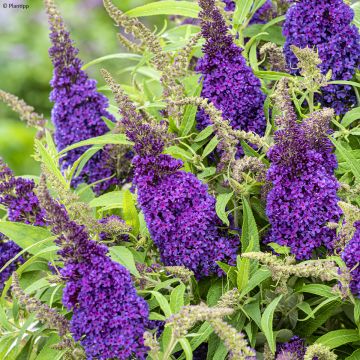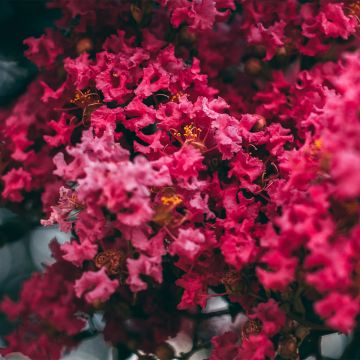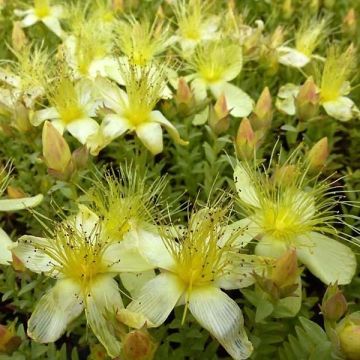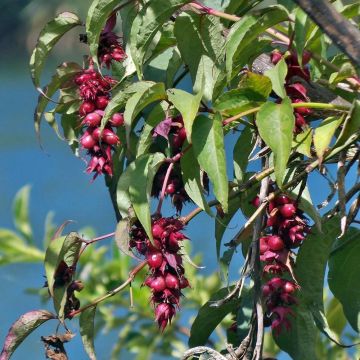

Entelea arborescens - Whau
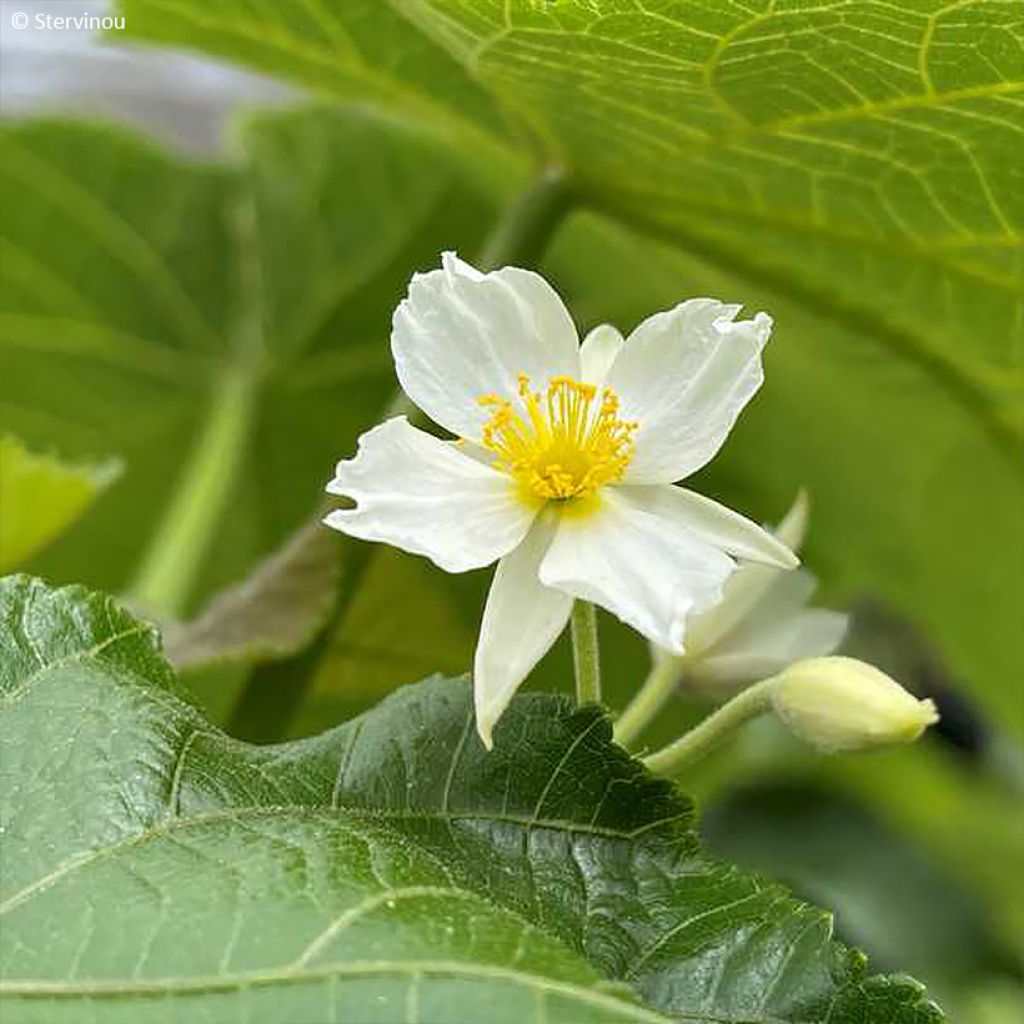

Entelea arborescens - Whau
Entelea arborescens - Whau
Entelea arborescens
Whau, New Zealand Mulberry
This item cannot be shipped to the selected country
Delivery charge from €5.90
More information
Schedule delivery date,
and select date in basket
This plant carries a 24 months recovery warranty
More information
We guarantee the quality of our plants for a full growing cycle, and will replace at our expense any plant that fails to recover under normal climatic and planting conditions.
From €5.90 for pickup delivery and €6.90 for home delivery
Express home delivery from €8.90.
Does this plant fit my garden?
Set up your Plantfit profile →
Description
The Entelea arborescens, also known as the bush entelea or the New Zealand cork tree, is a New Zealand species of the mallow family. This bushy plant is still rare in Europe due to its low hardiness, although it is easy to grow and appreciated for its exotic appearance. It bears lush, decorative foliage and offers clusters of white flowers with yellow centres throughout the summer.
The Entelea arborescens belongs to the mallow family, just like hibiscus and abutilons. This species, endemic to New Zealand, is rare there. It is found in subtropical forests, where it mainly grows in moist and sheltered undergrowth. In its natural habitat, the plant is often encountered on riverbanks or sheltered slopes, where the humidity and mild climate suit it perfectly. Also known as Whau by the Maoris, the plant is sometimes referred to by its former scientific name Plagianthus arborescens.
The Entelea arborescens takes the form of a rounded bush, reaching up to 3 m in height and width in cultivation, and double that in its natural habitat. Its growth is very rapid, with the stems of an adult plant able to reach 1 m in a single season. Its foliage, made up of large 20 cm long leaves, resembles that of the indoor lime tree or Dombeya. The leaf surface is slightly rough, with well-defined and prominent veins. The edges are slightly dentate. This dense foliage forms a thick crown that provides natural shade under the plant and helps create an exotic and lush atmosphere. Ornamentally, the Entelea ranks among plants with spectacular foliage, much like the catalpa. The flowering, occurring mainly from June to August, consists of small cup-shaped white flowers with crumpled petals, clustered in terminal inflorescences. These discreet flowers emit a light fragrance. After pollination by pollinating insects, the bush produces small, spherical, bristly, non-stinging, woody capsules containing black seeds.
The Entelea arborescens adds a beautiful exotic touch to the veranda, terrace, or balcony, provided it is given enough space to grow and overwintered in a frost-free environment, for example in a garage. To accompany it, consider passionflowers and Tibouchina, for example.
The Maoris used the Entelea to make baby diapers. Its nickname of cork tree comes from its light wood, which was used to make fishing floats, although it does not possess the same characteristics as traditional cork.
Report an error about the product description
Plant habit
Flowering
Foliage
Botanical data
Entelea
arborescens
Malvaceae
Whau, New Zealand Mulberry
Plagianthus arborescens (ancienne dénomination)
Oceania
Other Shrubs A to Z
Planting and care
In cold climates, it is recommended to grow Entelea arborescens in a pot rather than in the ground, in order to protect it effectively in winter. This plant, sensitive to frost, cannot tolerate temperatures below -5 °C. In a pot, you can easily move it to shelter it in a conservatory, a greenhouse, or an unheated garage, but frost-free during the cold season.
Use a pot with a minimum volume of 30 to 40 litres to allow its roots to develop properly and a well-draining substrate, composed of a mixture of compost, sand, and garden soil, to avoid excess water, and make sure the pot has a good drainage system (holes at the bottom of the pot). In summer, place the Entelea in the light, initially in a partially shaded position, then in the sun. Water regularly to keep the soil slightly moist without saturating it. Once the growing season is over, bring the plant indoors to a cool, bright location to protect it from the cold.
Planting period
Intended location
Care
This item has not been reviewed yet - be the first to leave a review about it.
Summer-flowering shrubs
Haven't found what you were looking for?
Hardiness is the lowest winter temperature a plant can endure without suffering serious damage or even dying. However, hardiness is affected by location (a sheltered area, such as a patio), protection (winter cover) and soil type (hardiness is improved by well-drained soil).

Photo Sharing Terms & Conditions
In order to encourage gardeners to interact and share their experiences, Promesse de fleurs offers various media enabling content to be uploaded onto its Site - in particular via the ‘Photo sharing’ module.
The User agrees to refrain from:
- Posting any content that is illegal, prejudicial, insulting, racist, inciteful to hatred, revisionist, contrary to public decency, that infringes on privacy or on the privacy rights of third parties, in particular the publicity rights of persons and goods, intellectual property rights, or the right to privacy.
- Submitting content on behalf of a third party;
- Impersonate the identity of a third party and/or publish any personal information about a third party;
In general, the User undertakes to refrain from any unethical behaviour.
All Content (in particular text, comments, files, images, photos, videos, creative works, etc.), which may be subject to property or intellectual property rights, image or other private rights, shall remain the property of the User, subject to the limited rights granted by the terms of the licence granted by Promesse de fleurs as stated below. Users are at liberty to publish or not to publish such Content on the Site, notably via the ‘Photo Sharing’ facility, and accept that this Content shall be made public and freely accessible, notably on the Internet.
Users further acknowledge, undertake to have ,and guarantee that they hold all necessary rights and permissions to publish such material on the Site, in particular with regard to the legislation in force pertaining to any privacy, property, intellectual property, image, or contractual rights, or rights of any other nature. By publishing such Content on the Site, Users acknowledge accepting full liability as publishers of the Content within the meaning of the law, and grant Promesse de fleurs, free of charge, an inclusive, worldwide licence for the said Content for the entire duration of its publication, including all reproduction, representation, up/downloading, displaying, performing, transmission, and storage rights.
Users also grant permission for their name to be linked to the Content and accept that this link may not always be made available.
By engaging in posting material, Users consent to their Content becoming automatically accessible on the Internet, in particular on other sites and/or blogs and/or web pages of the Promesse de fleurs site, including in particular social pages and the Promesse de fleurs catalogue.
Users may secure the removal of entrusted content free of charge by issuing a simple request via our contact form.
The flowering period indicated on our website applies to countries and regions located in USDA zone 8 (France, the United Kingdom, Ireland, the Netherlands, etc.)
It will vary according to where you live:
- In zones 9 to 10 (Italy, Spain, Greece, etc.), flowering will occur about 2 to 4 weeks earlier.
- In zones 6 to 7 (Germany, Poland, Slovenia, and lower mountainous regions), flowering will be delayed by 2 to 3 weeks.
- In zone 5 (Central Europe, Scandinavia), blooming will be delayed by 3 to 5 weeks.
In temperate climates, pruning of spring-flowering shrubs (forsythia, spireas, etc.) should be done just after flowering.
Pruning of summer-flowering shrubs (Indian Lilac, Perovskia, etc.) can be done in winter or spring.
In cold regions as well as with frost-sensitive plants, avoid pruning too early when severe frosts may still occur.
The planting period indicated on our website applies to countries and regions located in USDA zone 8 (France, United Kingdom, Ireland, Netherlands).
It will vary according to where you live:
- In Mediterranean zones (Marseille, Madrid, Milan, etc.), autumn and winter are the best planting periods.
- In continental zones (Strasbourg, Munich, Vienna, etc.), delay planting by 2 to 3 weeks in spring and bring it forward by 2 to 4 weeks in autumn.
- In mountainous regions (the Alps, Pyrenees, Carpathians, etc.), it is best to plant in late spring (May-June) or late summer (August-September).
The harvesting period indicated on our website applies to countries and regions in USDA zone 8 (France, England, Ireland, the Netherlands).
In colder areas (Scandinavia, Poland, Austria...) fruit and vegetable harvests are likely to be delayed by 3-4 weeks.
In warmer areas (Italy, Spain, Greece, etc.), harvesting will probably take place earlier, depending on weather conditions.
The sowing periods indicated on our website apply to countries and regions within USDA Zone 8 (France, UK, Ireland, Netherlands).
In colder areas (Scandinavia, Poland, Austria...), delay any outdoor sowing by 3-4 weeks, or sow under glass.
In warmer climes (Italy, Spain, Greece, etc.), bring outdoor sowing forward by a few weeks.





































